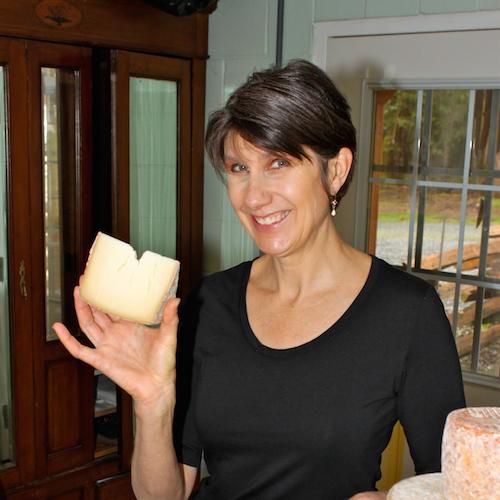
For many of us, the term cottage cheese conjures images of glistening, snowy white curds nestled on leaves of iceberg lettuce and surrounded by slippery slices of canned peaches – a common “diet-smart” dish served in many American restaurants. For others this ubiquitous product is used as a cooking substitute for ricotta cheese. Rarely is cottage cheese embraced for its own qualities.
In many European cultures the term cottage cheese often describes products quite different from what Americans associate with the name, from quickly coagulated and drained curdy cousins, more akin to ricotta, to any simple cheese made on the farm, historically in the farmer’s cottage. American-style cottage cheese, on the other hand, is made almost exclusively on an industrial scale from low-fat milk, leading to its reputation as a go-to choice for folks who are counting calories.
The same process that creates the curds of commercial brands can be used in your own home, or cottage, to create an amazingly distinctive and delicious version. While it’s not a quick cheese to make, the results are worth the time. In fact, you may be tempted, as I am, to propose a new moniker for your artisan cottage cheese, one more in keeping with its sublime potential. Caillé délicates (delicate curds) gets my vote.
Makes about 1 cup cream cheese
SUPPLIES:
- Stainless steel pot (6-quart or larger)
- Stainless steel spatula
- Stainless steel thermometer
- Cheesecloth or butter muslin
- Colander
INGREDIENTS:
- 1 gallon whole milk; cow, goat, or sheep (if using pasteurized milk, ensure that it’s not ultra-pasteurized)
- 1/4 teaspoon mesophilic cultures, such as Flora Danica, or 1/4 cup store-purchased buttermilk with live, active cultures
- 1/4 teaspoon calcium chloride (optional, but ideal if using store-purchased, pasteurized milk), diluted in 1/8 cup cool, non-chlorinated water
- 5 drops double-strength vegetarian rennet, diluted in 1/4 cup cool, non-chlorinated water
- Non-iodized salt, such as sea or kosher salt
- Heavy cream (optional)
1. Pour the milk into the pot, and begin to heat and stir. Heat the milk to 90°F, stirring constantly. Remove from the heat.
2. Sprinkle the cultures on top; cover, and wait 5 minutes. Stir until the powders are completely dissolved, usually 3 to 5 minutes. If using calcium chloride, add it now, and stir well. Then stir in the rennet and water mixture.
3. Cover the pot, and place it in a warm location, covered with towels so the temperature of the milk doesn’t drop below 86°F. The pot should not be disturbed during this time.
4. After 2 to 4 hours, the milk should be gelled enough so that it is easy to insert a blade along the side of the pot and pull away the curd. Cut the mass into 1-inch chunks (for medium-curd cottage cheese), cover, and let set for 10 minutes.
5. Place the pot on the stove or in a sink to which you can add warm water, and begin heating and stirring. You may need to be very gentle at first, depending on the milk used and the firmness of the curd. The stirring and cooking can take either 60 or 90 minutes.
6. The 90-minute method is done by adding heat and stirring incrementally. Raise the temperature 2 to 3°F while stirring; cover, and let set for 5 minutes. Repeat until 115°F is reached. For the 60-minute method, continually stir while slowly raising the temperature until 115°F is reached.
7. When the curds have reached the correct size and temperature, remove from the heat, and pour into a cheesecloth-lined colander. Rinse with cool water until the curds are cold. Drain for 10 minutes.
8. Add a pinch of salt, and stir. Drain for 20 to 30 minutes until no liquid can be squeezed from the cloth (squeeze gently to test; you don’t want to smash the tender curds).
9. For a creamy texture pour the finished curds into a bowl and stir in heavy cream, with salt to taste. At this point the curds will be a little squeaky when chewed but will become more tender and quiet by the next day. Refrigerate, and enjoy for 1 to 2 weeks.













